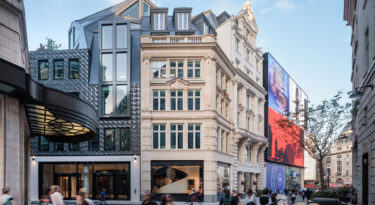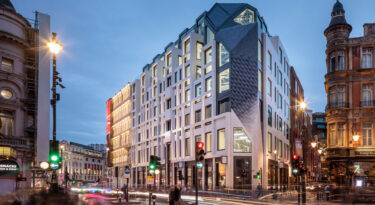Keeping the Lights
on at Piccadilly


The Piccadilly Lights have been an iconic sight in London for over a century and unmissable for the 100 million people who pass through Piccadilly Circus every year.
In this blog, Phil Allan, MEP Project Manager, outlines how he navigated the complex electrical works at Lucent – Wates’ landmark project for Landsec – explaining the careful co-ordination and meticulous planning that went into the changeover of the Lights.

With the project sitting directly behind the huge advertising screen, maintaining the Lights was integral to the works from the outset. I was involved from the initial tender process to completion and it was great to see it all the way through.
Our first challenge was maintaining the lights during the demolition and construction phase. We had to ensure constant access to the plant room, 24 hours a day, in case anything happened and access to the cleaning cradle on the roof so the lights could be cleaned at any time, morning or night, ready for the influx of tourists that would be arriving to take photos.
As you can imagine, this required a lot of planning.

Being asked to lead on environment and sustainability on such a high-profile development as Lucent for my first project with Wates, and working with a client which was equally as passionate as us, has been a welcome challenge and one that I have thoroughly enjoyed.
The commercial market is demanding more sustainable workplaces for the future and we must also ensure we are building in a way that meets the climate agreements we have committed to as a country – providing more energy efficient buildings and responding to the cost-of-living crisis.
It was also crucial that we didn’t jeopardise the area becoming too hot and risk the lights overheating. The resounding message was, ‘don’t let the lights go out!’ Through fantastic teamwork and thorough planning, I’m proud to say we carried out the changeover seamlessly, quite an achievement by all involved.
The plant room was fed from a temporary connection from UK Power Networks, so another element of the job was to move this over to a permanent connection during the project by building a new power sub-station within Lucent. This ultimately meant the lights had to go off for us to re-feed them and connect them to the new power source. We knew we only had a maximum two-hour downtime so had a contingency plan in place and a team on standby to abort and revert back to the original source if necessary.
The famous Lights had only ever been turned off once before, so the pressure was on. Usually on 24 hours a day, 365 days a year, it was imperative that we picked the perfect time. A little-known fact is that there are cameras opposite the lights which monitor footfall and film the crowds so that particular advertisements are shown on the screen depending on the audience. After assessing this data, we were advised that the optimum downtime for turning off the lights to ensure minimum revenue loss was 2am on a Tuesday and Wednesday morning.
After 18 months of organising and co-ordination to make sure the sub-station was up and running and the live site was safe and accessible, and after a false start due to part of the UK power system being faulty, we finally turned the lights off on 19 July 2022 and completed the switchover the following day all without incident.
The ironic thing is people should have taken the opportunity to get photos of the black screen when the lights were off because they won’t get a chance to see that again any time soon!
Thanks to a culmination of hard work from our team, exemplary planning and honest, open engagement with our M&E subcontractors and our client, we did it. And I’m pleased to say the lights are still on!